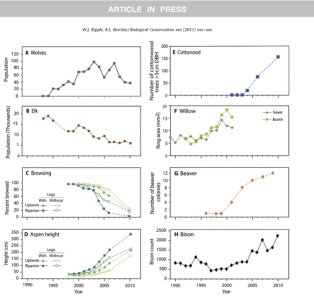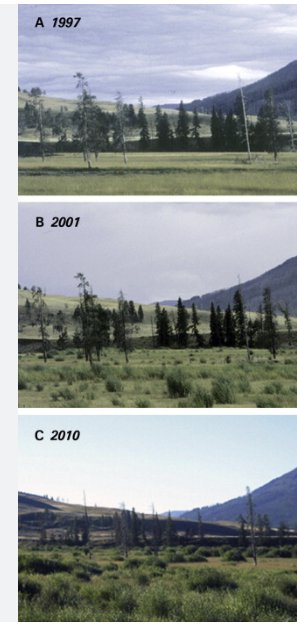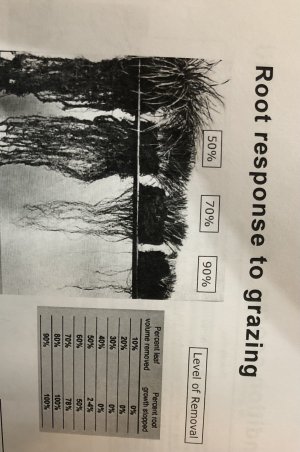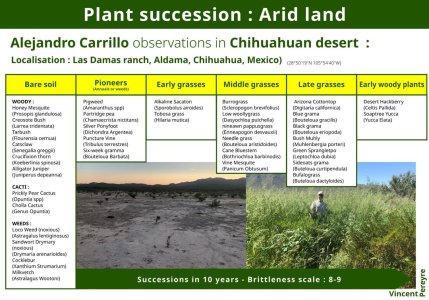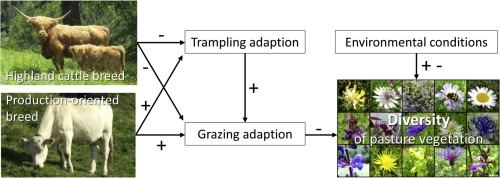Totally agree... you can control invasiveness of many woody species simply by implementing high/very high stock density grazing for short periods of time, ESPECIALLY if you're willing to leave enough grass height left behind after the graze. If you trim that grass down too short, it will prune the roots of the grasses, and they won't recover nearly as quickly or vigorously.
You dead on RDFF. Rotational grazing has been a game changer for me. One of the many things I learned is , if you only give cattle what they
can eat in a day and do it day after day they will start eating everything in front of them, weeds and all. I suppose this is true with all ruminants.
I also liked what RMC showed below but the hour being what it is I will just mention that leaving stock on a area long enough to require that.
2nd or 3rd bite will eventually result in a depleted pasture. I remember the first time I saw the grass greening up behind the cattle using
rotational grazing instead of whole field grazing. Rotational grazing has enabled me to go from haying 2 or 3 times per year to just one time.
For the record I will not try to talk anyone into rotational grazing, The color of your cow, hump or ear is your business as is the grass you
eat into the ground or grow to thistle or brush or let grow, I will tell you how much I appreciate the 10 to 20 feet of fill dirt that is in the
bottom of the creek that has eroded off the neighbors corn fields and pastures. Did you realize that 250 bushel corn ground will grow
waist high grass with no fertilizer? I doubt if any of them will ever go to rotational grazing. A lot of them are relatives with 4000 acres
and big red or green tractors and I'm the crazy one who walks around with his cows. They still claim me, I guess it's that blood is thicker
than water thingy..
